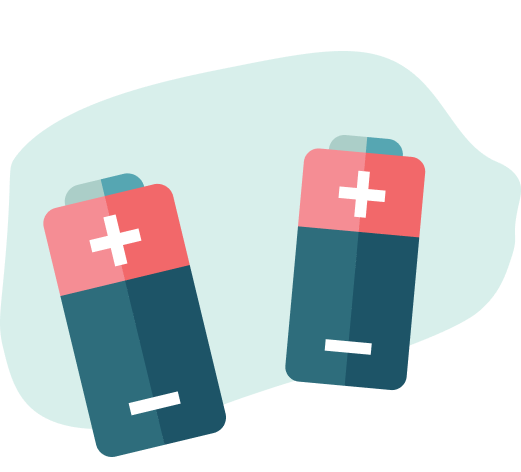Include into a green container all the waste you have not been able to dispose of in other containers assigned for separate waste collection.
HOW TO SEPARATE?
Separate the waste and dispose of each type in a provided container
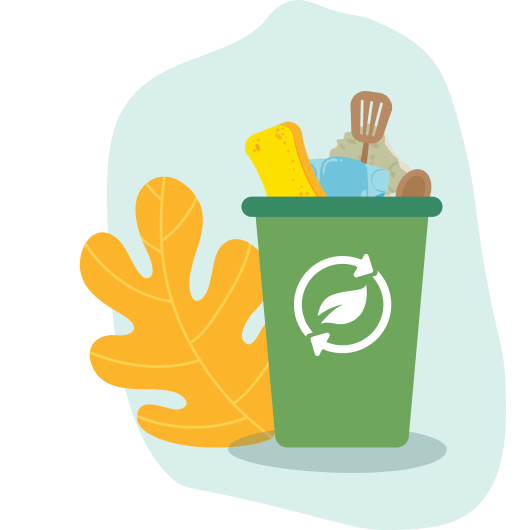
Mixed and municipal waste
- metal, glass and plastic packaging
- used milk and beverages Tetra Paks
- electric and electronic devices (and additional equipment like cables)
- bulky, metal and construction waste
- hazardous waste (fluorescent lights, energy saving bulbs, lacks, dissolvents, batteries and accumulators)
- liquid and semi- liquid waste, ember and hot ashes
- live animals and carcasses
Paper and cardboard
Dispose of paper and cardboard into a blue container.
- newspapers, magazines, catalogues
- letters, envelopes, printing paper, notebooks
- leaf books, greeting cards
- paper bags
- smaller cardboard boxes
- paper and carton packaging: food, cosmetics, eggs, shoe boxes and similar
- used Tetra Pak packaging
- dirty and greasy paper, wet tissues
- self-adhesive foils and stickers
- photographs, photo papers
- wallpaper leftovers
- paper with foil or plastic
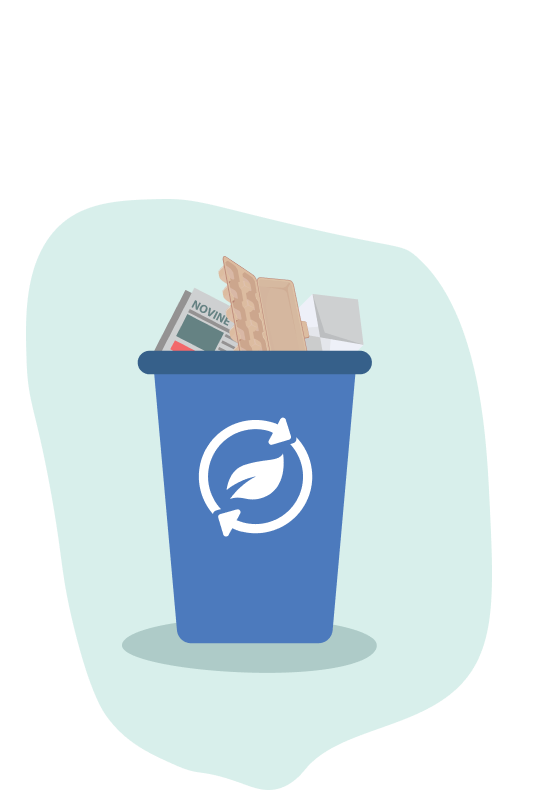
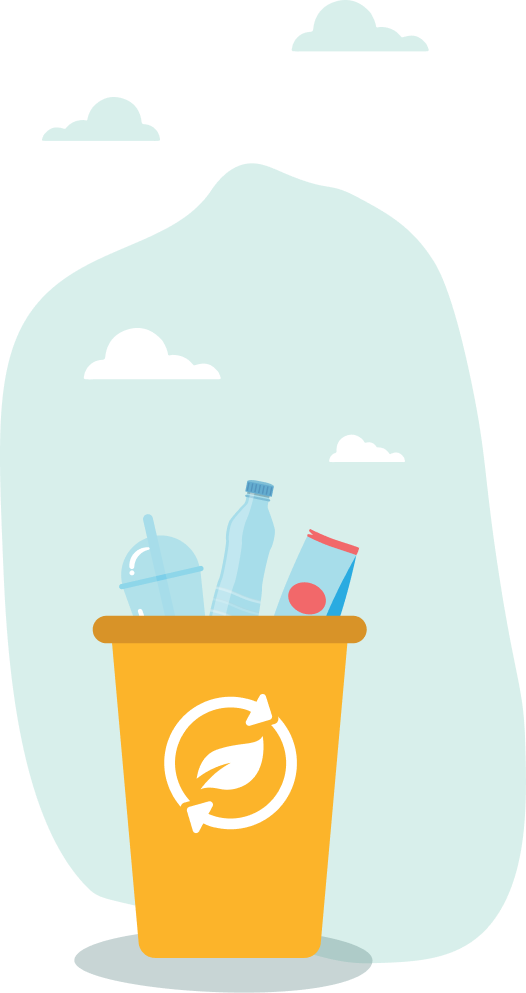
Plastics and multilayer packaging
Dispose of plastic packaging into a 120 l yellow PVC bag (in year 2020 bags will be replaced with yellow containers), and before disposal clean, flatten and fold the packaging.
- milk and other beverages, oil, vinegar, detergent bottles (without hazardous waste label)
- plastic caps and lids, cutlery, straws
- CD and DVD boxes
- candy and snacks bags, frozen food, toilet paper or paper towels, plastic shopping bags
- plastic spread, ice cream and household containers
- protective plastic packaging, plastic and foils
- plastic toys (with no other material)
- cosmetics and personal hygiene products (creams, shampoos…) packaging
- multilevel packaging containing plastic foil from the outside and aluminium foil from the inside (for example big baby food or snacks packages)
- children’s toys made of various materials
- carpets, Styrofoam, sponges, laminate
- toothbrushes
- cables (electricity, network)
- umbrellas, sports balls, lighters
- hazardous waste plastic packaging, like corrosive acids and substances packaging (for example pesticides, paints, lacks, dissolvent) and motor oil and lubricants packaging
Glass
- glass bottles and jars
- window glass
- car glass
- crystal and optic glass
- armoured glass
- laboratory glass
- fibre glass
- bulbs and fluorescent lights
- porcelain and ceramics objects
Dispose of flat window glasses and fluorescent lights in recycling yards exclusively.
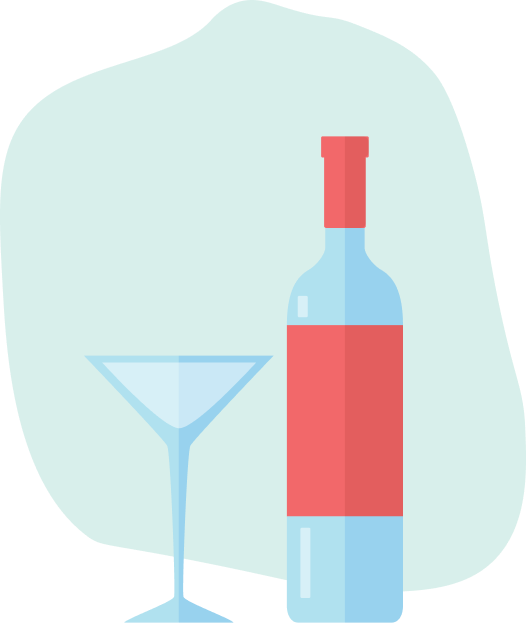

Textile
- clothes
- towels
- bedding
- curtains
- hats and caps
- bags and rag toys
- other textile products
- plastic curtains and tablecloths
All of the above can be disposed of in recycling yards.
Biowaste
Biowaste is not collected but can be disposed of by household composting.
How to compost?
You can make the best fertilizer for your plants yourself.
You will need: old plastic bin or metal box, some branches, cardboard, sawdust, soil (or straw, hay, leaves).
- Pin some holes at the bottom of a bin or a box.
- At the bottom make a layer of branches, cardboard and straw.
- Throw on that layer shredded waste like fruit, vegetable, grass and coffee grounds or tea bags. Mix the waste adding more branches, cardboard, sawdust.
- Soak the compost with some water, it should not be too dry or too moist.
- Mix it occasionally allowing the mixture to get enough oxygen and ended up turning into humus.
- Cover the compost with a thin layer of soil, dry grass or cardboard.
- Compost is ready to be used when it turns dark brown and it is impossible to distinguish the waste thrown in it.
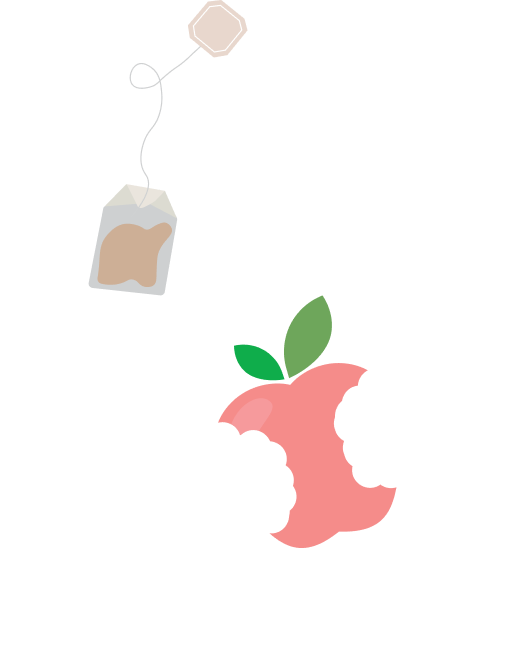
Bulky waste
All the objects that cannot be collected regularly together with mixed municipality waste due to its size like furniture, kitchen equipment, garden equipment, flooring etc are included in bulky waste. Abandoned vehicles, construction waste, old tyres and hazardous waste are not included into bulky waste.
Bulky waste is collected in recycling yards and three times a year free of charge from user’s utility location. It can be disposed of in front of a user’s dwelling, being the largest acceptable quantity of 2m3 per collection.
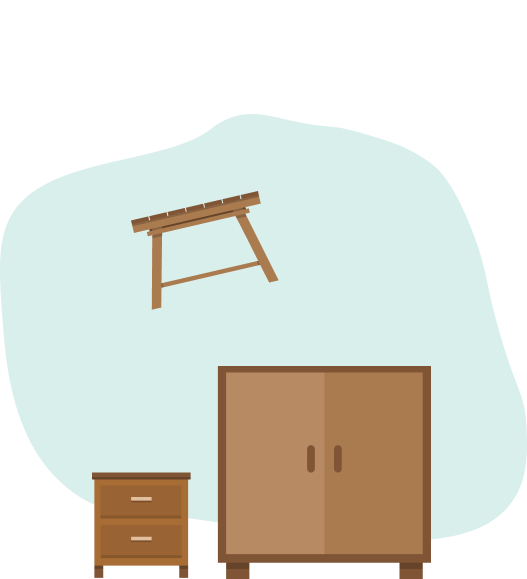

Electric and electronic (EE) waste
EE waste consists of discarded electric and electronic equipment and devices dependant on electricity.
- devices bigger than 85 mm should be disposed of free of charge in shops carrying a sign „We accept EE waste with no purchase requirement “
- bigger devices should be discarded free of charge in a shop while buying new ones
- dispose of them free of charge in a recycling yard
- repairmen must accept into their premises free of charge electronic and electric equipment that is considered unrepairable or commercially unprofitable to repair
Batteries and accumulators
- dispose of them free of charge in a recycling yard
- dispose of them free of charge in a shop selling batteries and accumulators
- batteries can also be included in containers that are placed in the most frequent spots
- can be disposed of free of charge leaving it to a repairman during the repair of a device that contains a portable battery or an accumulator
